
Fryeella gardneri
Arched Red Seaweed
Gonzales Bay, Juan de Fuca Strait, B.C., Canada
30 December 2022
Collected at 3:30pm PST
Low tide 4.7 feet at 2:15pm PST (measured at Oak Bay Tidal Station)
Weather: Overcast, light variable winds, precipitation occasional showers, sea smooth, temperature 6 ˚C, relative humidity 90%.
Phase of Moon: Waxing Gibbous, 58% or 7 days past the new moon; (Previous Phase, First Quarter, 29 Dec 2022 at 5:20pm PST; Next Phase, Full Moon, 6 January 2023 at 3:07pm PST.)
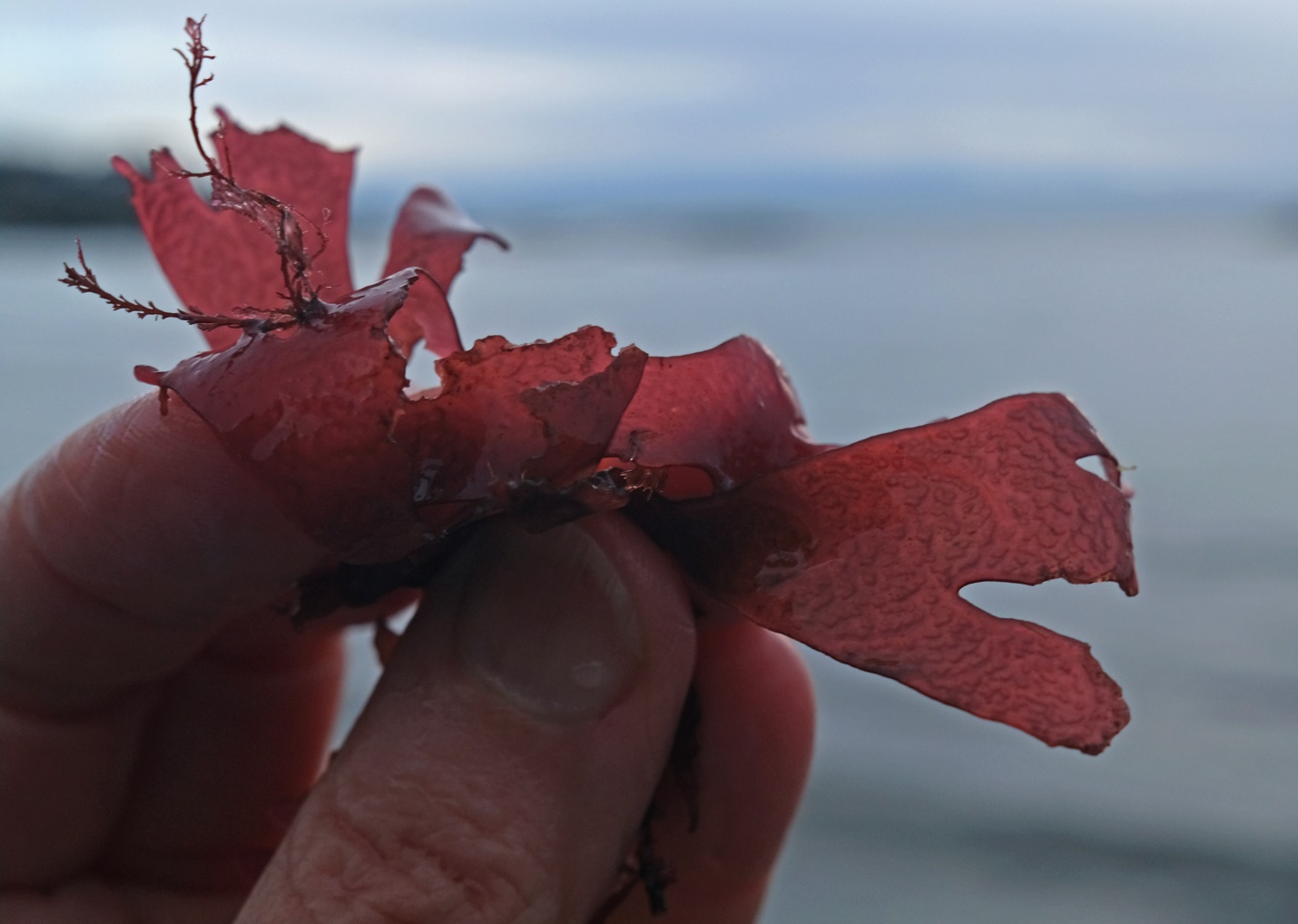
Figure 1: Freshly picked out of the wrack and held to the light, this red seaweed reveals the patterning that distinguishes it as Fryella gardneri. Gonzales Bay, Juan de Fuca Strait, B.C., Canada. December 30, 2022. Photo ID 27487 ©Seaweedwhisperings.com
In situ Discovery:
This afternoon, right near the close of the year, we finally had the first daytime low-ish tide (4.7 feet) in a good long while. I went to explore the drift at Gonzales Bay. From a distance it looked like there were very few seaweeds present and mainly a lot of wood and tree bark debris. A closer look revealed countless pieces and broken off sections of many species of macro alga include many reds. To my surprise I found a cluster of seaweed growing epiphytically from a small tubeworm; it looked to me as if it might be Fryeella gardneri. This is a red alga that I’ve previous studied to learn its field marks, but also had very low expectation of ever finding it as it loves the subtidal regions of our waters.
We theorized about what could have broken this tubeworm from the substrate, as we know that Fryeella likes subtidal waters and that deeper waters are far less prone to turbulence and other turmoil than the intertidal regions. We’d just been through a period of our winter “king tides” (closest to the solstice) wherein our coastlines had extremely high daytime high tides, including a series of 10.8 feet highs, and with them correspondingly very low nighttime lows of minus 0.7 feet. Interspersed with these tidal extremes were some strong winter storms that brought gusting high winds. We think that the Bull Kelp, Nereocystis luetkeana, that grows out deeper in the bay could well have been subject to strong surface stress and some of them certainly had their holdfasts torn from the substrate. These holdfasts are heavy and could drag along the bottom in high winds and surf. Possibly one such kelp holdfast collided with a colony of tubeworms and tore some of them away from their home? This is one possible explanation.
Whatever the cause that delivered this to the shore, we recognized how unlikely it would be to find Fryeella again and since it had already been washed from its home and left exposed in the drift, we collected it in a bucket of fresh seawater.
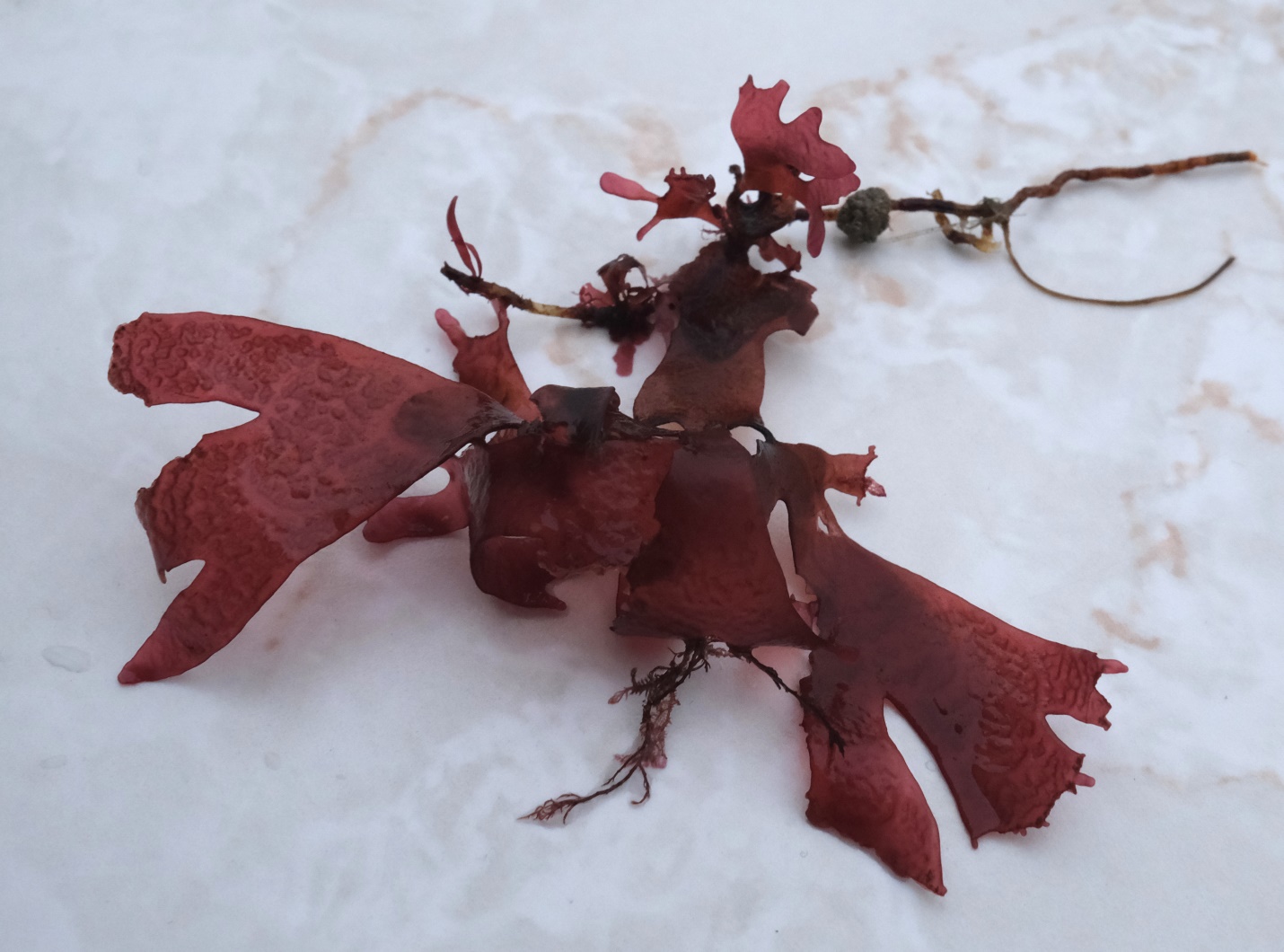
Figure 2: “Fryeella & Co” (as we came to think of them) are seen here – there is the casing of a tubeworm, a colonial tunicate, and at least 4 species of macro algae all in this “one” collected specimen. From this perspective you are seeing the topside of the Fryeella blades. January 1, 2023. Photo ID 27488 ©Seaweedwhisperings.com
Observations & Impressions, Day One:
Person 1:
Happy-go-lucky.
Eccentric.
Sort of neatly dressed, but doesn’t quite have it ‘together’.
Unconventional relationships... (e.g. with tubeworms).
Out-of-sync.
Confusing to others.
To the outsider, Fryeella can appear unsure of its identity.
Exploring outward and forward, and not looking back.
Reaching upward and outward.
Can be showy, or retreat to the cover of other seaweeds.
Looks like it has lots of rounded bumps on the blades..., and sure enough, to the touch it feels like that too.
I’m not physically attracted to it, but rather captivated by what it might have to offer in intellectual or spiritual realms. However, it’s too busy with its own explorations to make the effort to share.
It is staring at me, waiting for my approval.

Figure 3: This is the underside of “Fryeella & Co”. The protruding blobs are plainly visible on the underside of the blades. Most of the blades in this specimen were damaged and there are also quite a few young Fryeella blades scattered along the short length of the tubeworm casing. January 1, 2023. Photo ID 27489 ©Seaweedwhisperings.com
Person 2:
Holding the seaweed up to the light it is easy to see that the flattened blades are patterned with clusters of irregularly shaped blobs. This feature distinguishes Fryeella from other similar reds in our area, especially the Rhodymenias which are smooth and have no such patterning.
The blades are firm, somewhat cartilaginous in feel, except that the markings are actually a bumpy texture that is hinted at visually on the top of the blades but that is very much more physically obvious on the underside where the bumps protrude.
I believe what we have found is a fairly young alga and it is definitely a part of a multi-species community. The community includes, first of all, a 10 or 12 centimeter section of tubeworm which Fryella is growing epiphytically from. This tubeworm is Phyllochaetopterus prolifica (prolific three-section tubeworm). Also growing on the tubeworm is a rounded blob of calcareous-like life that may be some kind of tunicate (later research confirmed that this is Didemnum carnulentum, a colonial tunicate that is also called Pacific white crust). There is also a very fine filamentous algae growing at one section of the tube and I even see a tiny Rhodymenia (its total length only 1 cm but already true to form and displaying its shiny smooth red surface). Then with Fryeella itself, another finely branched red alga is growing epiphytically from one of her blades; so one epiphyte is hosting another epiphyte. This is rather remarkable number of species, given what we have in hand is a tiny amount of material life forms.
I think ‘community’ is an integral aspect for Fryeella. It is only within the ‘right’ community that she thrives. Without it she cannot be a pioneer reaching out towards new frontiers, nor find the shelter she sometimes seeks. And she also joins in with the community at times and makes room for others to join in nearby, too. The concept perhaps is one of compatible neighbors.
And since subtidal regions are the realm of this type of community, areas where the canopy of large kelps filters the light that reaches down to the ocean bottom and substrate, another slant on the community concept arises. The kelps are not in close proximity to our Fryeella group, yet they are not only compatible neighbors but also are necessary ones.
Your tone of red, Fryeella, is a lovely one. It is more beet or cherry red than scarlet. Many of our subtidal seaweeds are reds, and this means that you’ve done away with pigments that might filter access of light to your cells. You want direct receptivity with light – BUT only filtered sunlight will suit you. Strong light would be “too much” for you, Fryeella. It seems you have a keen sensitivity to light and so your deep water habitat is ideal.
References I recall mention that you have another ‘play’ of color in your repertoire, Fryeella. Iridescence that is often of a bluish tone; however, this iridescence is present in you only in the southernmost parts of your range, not here in our area.
So, do you tolerate cooler waters but prefer slightly warmer waters? Are you sensitive in that way, too?
Give you warmer and deep enough waters which receive gently filtered light and you gleam with iridescence!
Your flattened blades like to divide and branch and then branch again, all on the one plane. Where the blade is the broadest and just a bit before where it dichotomously branches, there is a gap, generally arch-like in shape, that has no bumps to it. And then again, when you branch once more there is another ‘arch’ that is the same, also bump-free.
Are these arches like stretch marks on a pregnant woman’s abdomen? Do they indicate where you’ve poured a lot of your resources in order to “birth” another split into two?
Whatever their origin, they are notable and even make their way into your common name, Arched Red Seaweed.
What is the purpose of your bumpy blobs, Fryeella?
Do they act like facets in a cut gem stone? Do they bend light within you, Fryeella, so that you can play with it a bit longer? Extend or maximize your interaction with it?
I think this may be so. The light that reaches you then tumbles around refracted within you. This certainly could aid your photosynthetic growth, but beyond biological functions what does this give you Fryeella?
Do you bend and turn and tumble, too? Not physically, as you clearly know right side up and bottom side down. But with your ideas, Fryeella, do they do this kind of tumble? Do you philosophize and hypothesize and theorize and explore as the changing angles of light grant you new perspectives?
I took a look at Fryeella with my hand lens. The magnification revealed that the bumps on the back of the blade are quite ‘raised’ from the main surface, and also that within them there are concentrations of tiny dots that look deeper red in color. These bumps or blobs are not just spherical; some are convoluted worm-like shapes and other such forms that all have rounded edges. I can’t really see two shapes that are identical; they seem unique. Is this like a human fingerprint? Distinctive to the individual?
You could say that these blobs are like strange blisters but they do NOT seem to be fluid-filled. They seem in fact to be rather solid.
The feel when I run my finger over the back side of these blades is like a smoothly glazed and finely pebbled surface. My touch glides over the ridges of the bumps smoothly and easily. It’s quite a pleasant sensation; I enjoy it. To run my finger of the top side of the blade is entirely different; it is far smoother and it almost has a drier feeling, a little like leather or very short velvet. It is not slippery like the bottom and feels almost like it would cling to the pad of my finger. The underside never clings – it obviously retains water much better, too, between all the bumps and blobs.
There is something about the feel that is a bit beyond my grasp yet..., I’ll have to ponder it further.
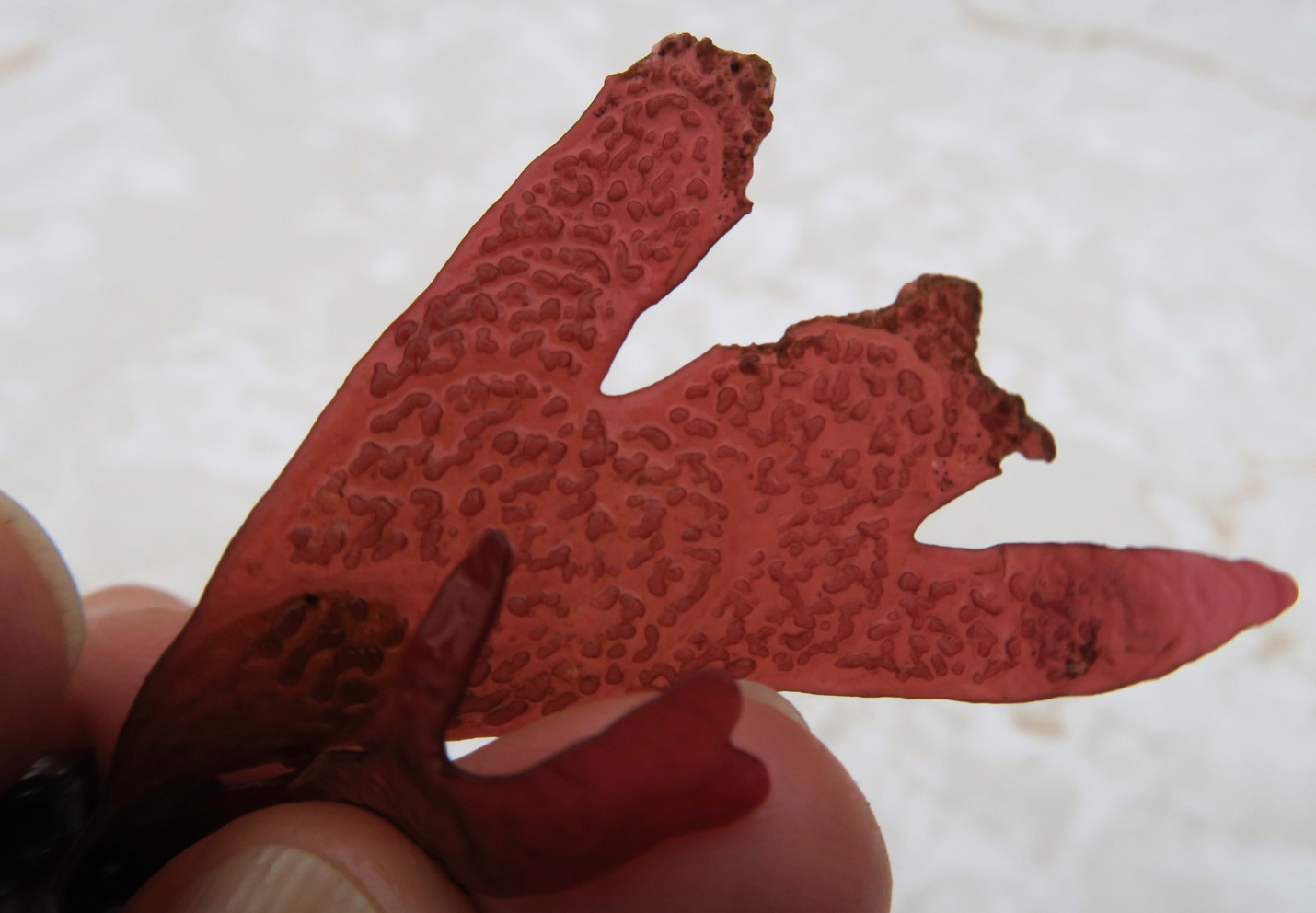
Figure 4: On the underside of this one blade, a few of the “blob-free” arches or half-moons can be seen. January 1, 2023. Photo ID 27490 ©Seaweedwhisperings.com
Next day, further explorations:
Person 1:
My first visual impression when I saw Fryeella on December 30th was of textured glass. But at the time, I couldn’t recall where I had seen such a material.
Feel of the blades matches that appearance – rounded bumps giving an uneven but relatively smooth feel.
Looking at photos taken by Person 2, I can readily see the visual arches just below wherever a blade begins to branch.
The arch is a gentle arc, reminiscent of a bridge in a Japanese garden. The gentleness serves as an invitation to cross into the unknown.
Textured glass offers privacy..., helps this seaweed keep its knowledge secret.
Explore, but not share?
Like a prospector concealing the whereabouts of his gold mine, or an early spice trader keeping secret his sources.
Where the blade tips are damaged, they look as though they have repaired... resilient internally? Spiritually?
Person 2:
The underside bumpy protrusions have the effect of strengthening the Fryeella blades. They really do feel quite tough.
This is in contrast to the overall “look” of the total thallus of our specimen which is a bit tattered or even disorganized looking.
And where did the blades tatter? It seems mainly to be at the tips. And then, after such injury, Fryeella seems to be able to sprout new extensions, new flattened and round-tipped “tongues” from the injured edge. So repair and recovery is continuous and ever reaching out at the tips.
It occurred to me that this seaweed does indeed hold fast to its tubeworm host, but how? I cannot detect with my naked eye nor with my 20X hand lens how this seaweed affixes itself to the tube. However it does this, its holdfast is effective and sturdy. We would not have found this specimen of Fryeella except that the tube of the tubeworm is what failed. The broken edge of the tube is very jagged – torn, not sliced.
On our collected tube (of the prolific three-section tubeworm) there are some very tiny and young Fryeellas. They already have the overall general “adult” shape – somewhat broad wedge-shaped base that forks irregularly and mostly dichotomously. They have a hint of the bumpy protrusions and also of the “protrusion-less” section on the blade that creates the arch.
On more mature blades of this seaweed the bumps are like pebble-textured glass that is put up in exterior bathroom windows. Such glass allows light in, but it does not allow a clear view through.
So, in Fryeella is it ONLY at the arches that a clear view is possible?
Everywhere else, it’s a privacy screen.
And why is that privacy screen needed?
Is Fryeella shy? Or is Fryeella one who dislikes interruption when they are busily occupied in their pursuits?
And the clear sections, the arches, arches that occur as concentric arches as the seaweed grows and the blade gets larger – are these a kind of “segmented view”? Or do they indicate something about the center? Something along the lines that Fryeella’s points of clarity are always informed from and originating from its center, but they are also growing, or striving to move beyond as well.
In the bumpy blob section of the blade it feels as if they are exploring, and deeply so – from all angles. They are exploring but also much of the time they are not yet ready to reveal their thoughts / ideas / work. The privacy glass serves its purpose here.
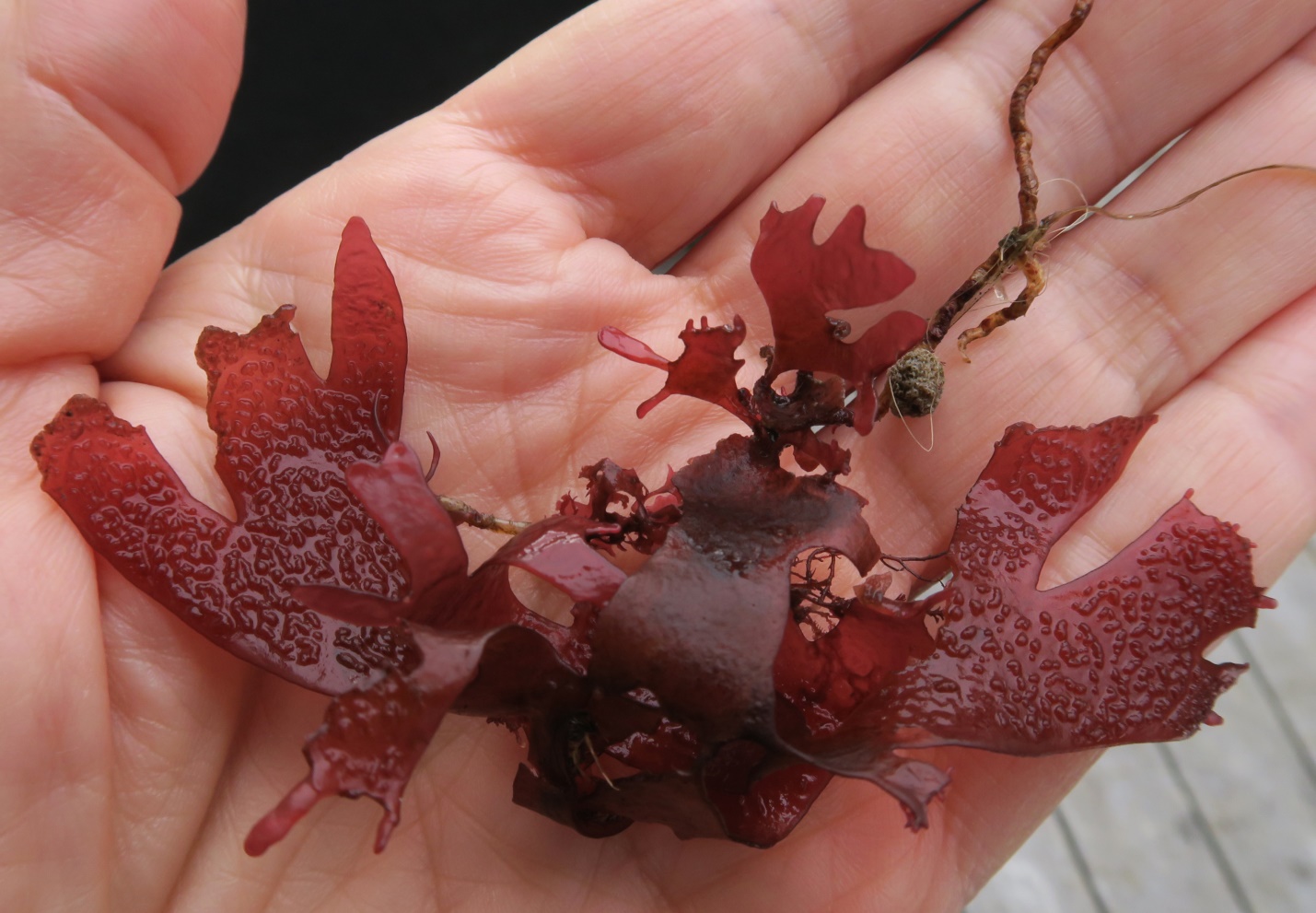
Figure 5: Displayed in hand, this view gives another perspective on Fryeella’s form and texture. Fryeella is known to choose to grow epiphytically on tubeworms as well as on other algae and even directly on rock. It lives in the subtidal regions of our waters. Gonzales Bay, Juan de Fuca Strait, B.C., Canada. December 30, 2022. Photo ID 27491 ©Seaweedwhisperings.com
Discussion:
Happy-go-lucky. On first review we noted that this may seem an odd descriptor, but it is a first impression that was formed by Fryeella’s appearance. The phrase came to Person 1 as a way of summing up that Fryeella cares more about what it’s doing than about how it looks. Also his interest in Fryeella was not in how she looks but in what is beyond the surface.
We note that “happy-go-lucky” and “care-free” can seem to be similar terms, but in this seaweed we have the difference exemplified. Care-free has much less going on, is less engaged, and is, quite literally, free of cares. Happy-go-lucky has some ‘cares’ AND feels fortunate (lucky) in them. Fryeella is happy in what she is engaged in.
And to some, seeing that Fryeella is engaged in such a way is intriguing; there is a desire to understand a bit about what all of this is about. AND we noted earlier in our observations that Fryeella has a strong desire for privacy. That they will explore and not necessarily share. Why would Fryeella explore but not share?
It seems that there is uncertainty..., therefore they are still exploring, reviewing, looking from new angles and pursing the depths of their investigations. Early on in our interactions we found ourselves ‘theorizing’ on how the Fryeella and tubeworm community could have been dislodged from its home. It seems that we were already caught up in the hypothesizing and theorizing and even sometimes philosophizing nature of Fryeella. And as the Whispering proceeded we could see that Fryeella does not like to share its theories or philosophies until it has reached a certain completion with them. Until such point, privacy is maintained. Any one who is intrigued will simply have to wait.
Fryeella has learned to take care. They want to get it right. Like the changing angles of light that might be refracted within, multiple perspectives allow Fryeella to polish and perfect what they are working on. Low light or light coming at a new angle can reveal flaws that were invisible in another view. If there is more to review or to perfect, Fryeella will make the effort to do this.
It seems that with the concentric arches that are a notable identifying feature in this seaweed a deeper pattern to their nature is also revealed. We felt that the areas full of bumpy blobs were where Fryeella is busy internally and privately with their explorations and investigations. At a certain point, this effort leads to a point of clarity – the arch. And, no sooner than this region of clarity is achieved but the seaweed forks, divides in two, and once more there is a profusion of bumpy blobs marking a new segment of exploratory and investigative efforts. So growth continues in this way, private and internal exploration leading to clarity that in turn leads to readiness to divide into two and explore further again.
At the points of clarity, Fryeella will happily share. At the regions filled with bumpy blobs, Fryeella will keep their thoughts and opinions to themselves.
It is interesting to note that Person 1 was interested to know this seaweed for what it had to offer intellectually and Fryeella gardneri itself is named for two prominent researchers and teachers in the science of phycology.
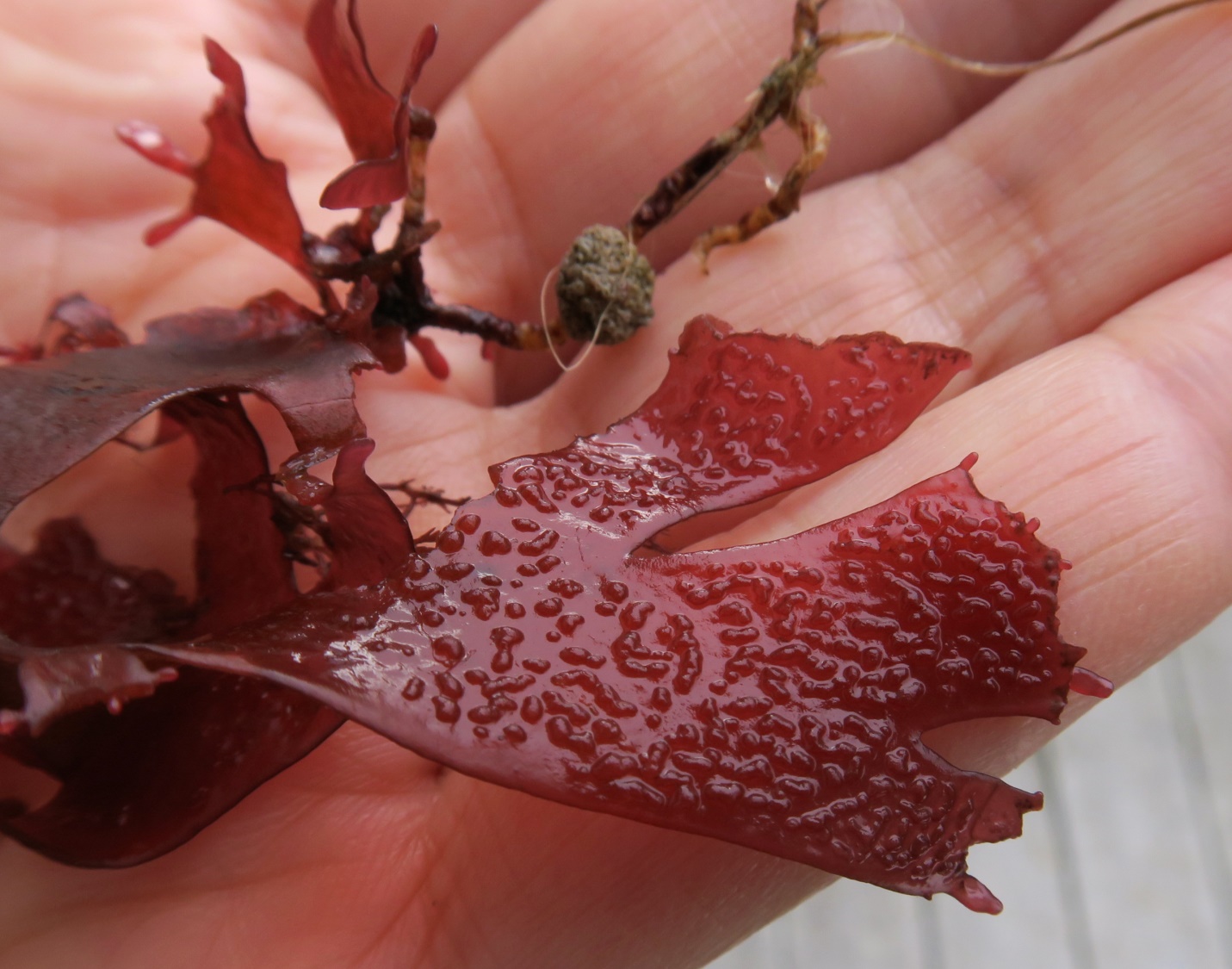
Figure 6: This damaged blade is displayed to show how the seaweed is continuing its growth with newly sprouted extensions at the blade tips. The direction of movement is onward and outward and not looking back. Gonzales Bay, Juan de Fuca Strait, B.C., Canada. December 30, 2022. Photo ID 27492 ©Seaweedwhisperings.com
Biology & Natural History Information:
Description:
This red alga grows as a cluster of irregularly dichotomously branched flattened blades. It can reach between 16 and 21 cm tall and the rounded-ended branches are typically about 1 cm wide. The color is a deep-red to orange-red. When held up to the light, curved lines are visible as concentric arches across the thallus; these are created by internal partitions within the blade. Some areas of the blade are textured and the arche-like or half-moon areas are smooth.
Habitat:
Arched Red Seaweed grows on rocks, worm tubes, and epiphytically on other algae in the subtidal, to a depth of 25 meters, throughout kelp forests.
Range:
Northern British Columbia and Haida Gwaii to Baja California, Mexico.
Remarks:
In California this red alga has a blue iridescence, but further north in its range it does not; the reason for this difference is not currently understood.
The genus of this seaweed is named for Dr. T.C. Frye, who was the director of the University of Washington’s Puget Sound Biological Station in the early 1900’s (now Friday Harbor Laboratories). The species name also honors another phycologist, N.L. Gardner, who was a teacher at Whidbey Island, Washington in the late 1890’s. Gardner’s interest in the local marine algae grew into a long and notable collaboration on west coast seaweeds with William A. Setchell at UC Berkeley.
This is the type species of the genus Fryeella. The type locality is Coupeville, Whidby Island, Washington and was first collected in 1898 by N.L. Gardner.
Classification:
Phylum: Rhodophyta
Class: Florideophyceae
Order: Rhodymeniales
Family: Fryeellaceae
Genus: Fryeella
Species: Fryeella gardneri (Setchell) Kylin 1931
Former name(s): Fauchea gardneri Setchell 1901; Rhodymenia gardneri (Setchell) Kylin 1925; Fryeella gardneri var. prostrata E.Y.Dawson & Neushul 1966
![]()